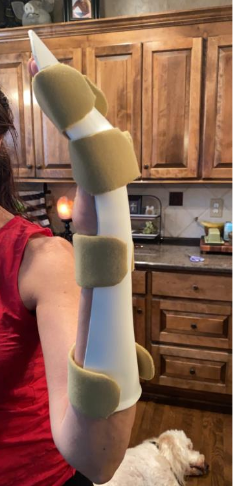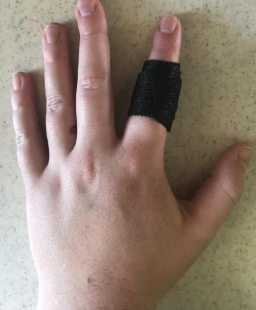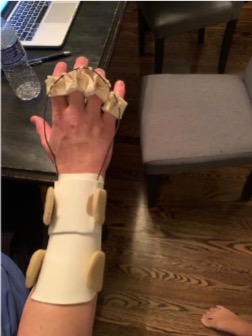

Having classes and labs taught remotely for part of the Spring 2020 semester didn’t deter the learning by Drake occupational therapy students, especially in their orthotics and positioning course. They turned their kitchens into laboratories by softening thermoplastic material in skillets or cake pans on the stovetop to make their own functional orthoses at home.
Fabricating orthoses is a standard project taken on by every first-year occupational therapy student. Normally, students use specially designed heating pans, heat guns, scissors, and other materials.



Assistant Professor of Occupational Therapy David Plutschack didn’t want his students to miss this valuable lesson, so he created directions for how orthoses could be made at home. He drew on his own experience working with limited equipment in China in 2009, and he consulted with other occupational therapists throughout the country.
“No other occupational therapy program in the country teaches this content in a virtual format,” Plutschack said. “I had to come up with a way to do so in a week.”
Fortunately Plutschack had worked with educational software developer PhysioU over the past two years to create SplintingPro, a mobile and web-based application with step-by-step orthosis fabrication instructional videos.
Using a mixture of videoconferencing lectures, SplintingPro, and Plutschack’s at-home instructions, occupational therapy students made their own orthoses for upper extremity injuries.
“One surprising aspect of feedback I received was how fun splinting at home was, because they could learn and fabricate on their own time,” Plutschack said.
Throughout the experience, Plutschack said he was heartened by the adaptability and resiliency of his students.
Robert Boarman and Brandon Christiansen, students in the OTD program, appreciated the personalized approach to student learning exemplified by Plutschack. “In a typical classroom setting he provides learning opportunities for many different learning styles,” Boarman said. “He has taken time to ensure all students are comfortable with the content and continues to offer clinical scenarios and purposeful analogies to ground the information. Fabricating custom orthotic devices—outside of our labs and inside our kitchens—was a noteworthy example of his commitment to preparing his students to be agile practitioners in the face of extraordinary circumstances.”
“Drake students are phenomenal and always so grateful,” Plutschack said. “The students said they appreciated the community we created and the personal relationship they each still had with me, even though we couldn’t meet in person.”